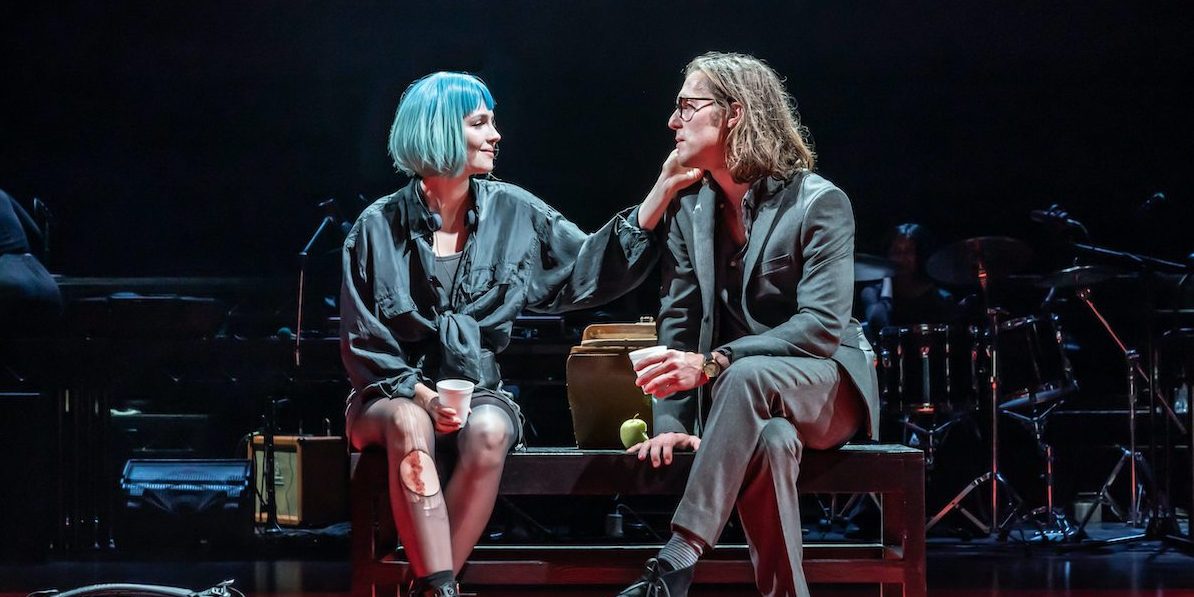Closer was first performed 25 years ago – in May 1997. I first saw it in Athens in 2008 and was immediately hooked by the play’s power through simplicity, the beautiful symmetry of its structure, and the raw emotions it explores (the directness of the language too!). I then got to see the 2015 London production and realised that the themes of betrayal and deception had an even bigger impact on me. It was a joy to watch Clare Lizzimore’s production last night.
It seems that I have been returning to this piece every 7 years, only to discover that Marber’s play is indeed a modern classic. It resonates so much with how complex human romantic relationships are: so fragile and so volatile. Lyric’s new production managed to beautifully portray how the 4 characters are trapped in a web of desire, love and hatred.
The narrative is quite straightforward: 4 strangers cross paths, flirt, fall in love, fight and hurt one another. In all possible combinations. In essence, the piece is a tragedy, the tragedy that comes when one stops being in love. However, the black humour of the piece was also highly explored in the production (it struck me how much people in the audience were laughing out loud! Perhaps too much.) But for me, it is the utter cynicism and pain that shines through the humour that is unique.
Ella Hunt was exceptional as Alice. She was fresh and dynamic, witty and sexy. Her voice is outstanding too – and her songs were a great asset to the production. There seemed to be fewer songs in the second half, and I wonder why was Alice the only character who got to express some of her inner thoughts through singing. But overall, it was a great device which made perfect use of Hunt’s strong music skills. Indeed, the element of music was an integral part of the production. Composed by Arun Ghosh (and performed live by Ghosh himself and Radhika Aggarawal) the music punctuated key moments and gave a very modern touch to the production.
Hunt’s excellent performance was matched by great performances from the other three actors too: Jack Farthing, Nina Toussaint-White, and Sam Troughton. There was occasionally too much shouting, screaming and spitting… but overall the actors, in addition to the on-stage musicians, took us on a real journey. Unfortunately, the Chorus was often used in a pedestrian way, doing menial activities upstage. For instance, when the main couple was sitting at a table in a restaurant, the chorus members were also sitting in two tables at the far end of the stage, blending into the background and creating the ‘ambience’ for the restaurant setting. But the director had done such a great job alongside designer Soutra Gilmour, with a very sleek and minimal design, where any ‘pedestrian’ action suddenly looked superfluous. Indeed, Gilmour’s set and costume design was the highlight of the production. The red velvet curtain that came down after the interval was so stark and imposing, fitting in beautifully with the red square on the floor. The prominence of the colour red on stage was a constant reminder of the passion and desire that reigned in all love triangles. The lighting design by Richard Howell worked for hand in hand with Gilmour’s design and Lizzimore’s direction, often transforming the space into a dream-like world. The intense colours, the stark blues and reds used, and washing over the characters’ bodies and faces were often foreshadowing the distorted and saturated emotions of all lovers.
All in all, this production was a powerful revival of a modern classic. It was a wise choice by Lizzimore to embrace the timelessness of the setting and to create a dream world merging the past with the present. All members of the creative team and the cast put together a visually-stunning production with humour, wit, vision and talent.

